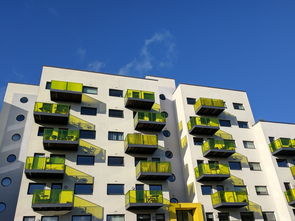The Art of Refurbished Elegance: A Master Architects Approach to Tidying Up the Living Room
As a renowned contemporary architect, my work transcends mere construction; it's about crafting spaces that not only house but also enhance the human experience. Each room, including the living room, is more than just a functional space; it's a reflection of the homeowner's lifestyle, personality, and aspirations. Therefore, when it comes to cleaning and organizing a living room, I approach it with the same meticulousness and creative vision.
The first step in打扫客厅, as any architect would, is a thorough assessment. I take in every corner, every piece of furniture, and every decorative element, considering their design, function, and history. This is where I begin to envision how each item can be strategically placed or rearranged to optimize both aesthetics and practicality. For instance, a statement rug could anchor the seating area, while a well-placed potted plant can add life and freshness.
Once the layout is planned, the cleaning process begins. The floor, being the largest surface, is a priority. I prefer to use eco-friendly cleaning products that not only keep the space hygienic but also align with my commitment to sustainability. I employ a combination of vacuuming, mopping, and dusting to remove every speck of dirt and grime. For delicate surfaces like glass and wood, I use specialized tools and cleaning solutions.
Next, I tackle the furniture. Dusty corners and upholstery require a gentle touch, using microfiber cloths to avoid scratches. For larger pieces, I might use a steam cleaner for an effective deep clean. It's essential to maintain the integrity of the materials while preserving their shine and color.
Lighting is another aspect that architects pay close attention to. During the cleaning process, I ensure that all light fixtures are dust-free, and any necessary repairs are made promptly. Proper lighting can elevate the ambiance and highlight artwork or architectural features.
Organizing the clutter is a crucial part of my approach. I believe in a minimalist aesthetic, but that doesn't mean eliminating everything. I strategically group similar items together and find places for them where they serve a purpose or add visual interest. Old magazines, books, or decorative boxes can be repurposed as storage solutions or displayed creatively.
Finally, the finishing touches. A well-organized living room not only looks tidy but also feels inviting. I might add a few decorative elements, such as a vase with fresh flowers or a carefully chosen sculpture, to bring a personal touch. The air needs to be fresh, and I might recommend natural scents to imbue the space with a soothing aroma.
In conclusion, cleaning a living room is more than just sweeping and dusting. It's a thoughtful process that combines artistry, functionality, and sustainability. As a master architect, I understand that a living room is not just a place to sit, but a space that tells a story, inspires creativity, and fosters connection. And through each cleaned and organized room, I strive to create a sanctuary that reflects the unique character of my clients.











